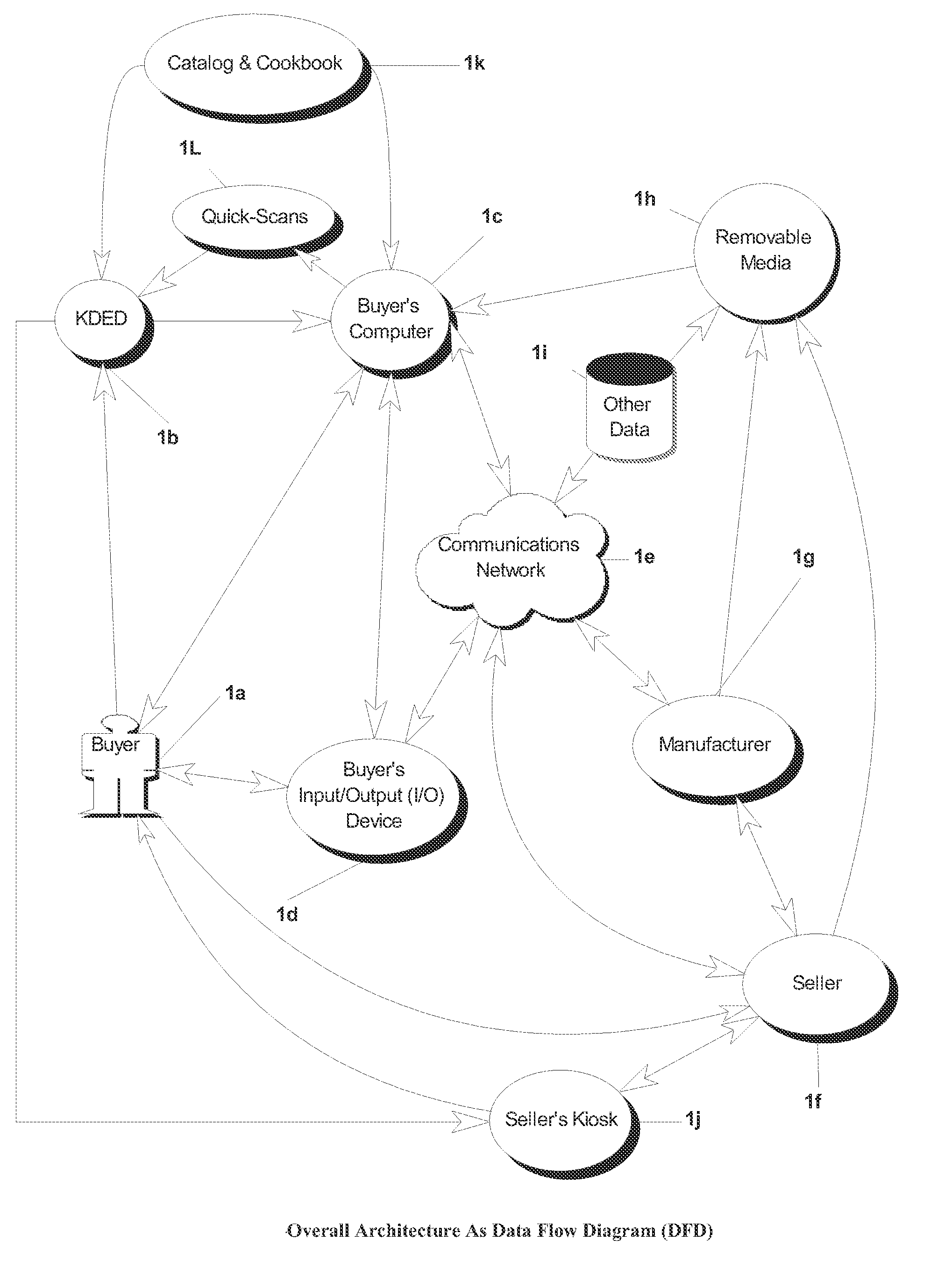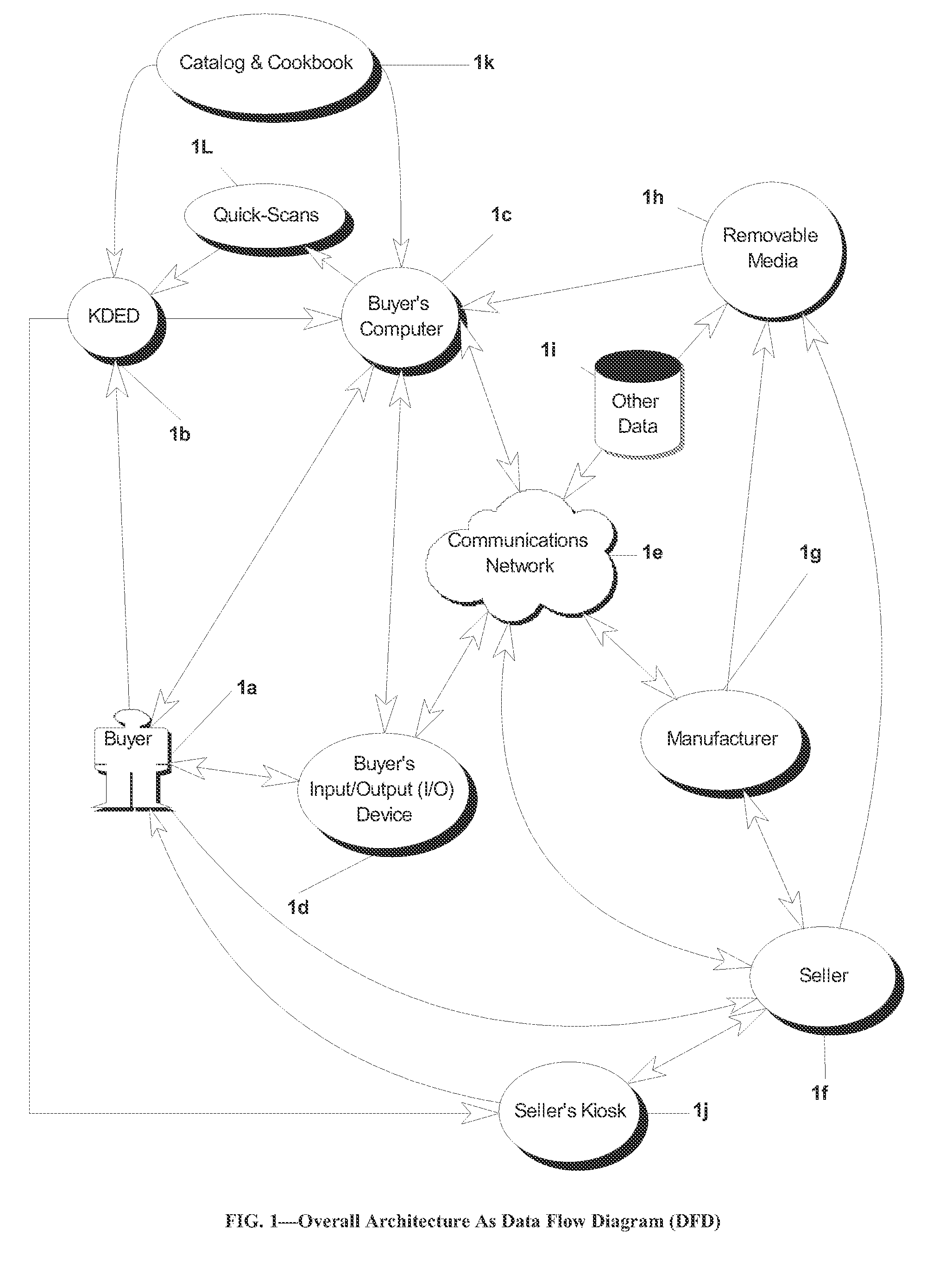Distributed personal automation and shopping method, apparatus, and process
a personal automation and shopping system technology, applied in the field of personal automation and shopping system, can solve the problems of limited number of portable barcode scanners, limited number of keyless data entry devices, limited application of industry and retail inventory control, etc., and achieve the effect of improving the speed and the dissemination of product information
- Summary
- Abstract
- Description
- Claims
- Application Information
AI Technical Summary
Benefits of technology
Problems solved by technology
Method used
Image
Examples
Embodiment Construction
Sequence Listing or Program
[0178]The computer program of the preferred embodiment of the distributed personal automation and shopping system (dPASS) preferably operates on an IBM-compatible PC running under Microsoft Windows 2000 [or a more recent version] The preferred computer program requires the Borland Database Engine version 5.0 be installed on the same PC. To install the computer program the user preferably copies all files to the PC's D: drive into the directories / folders indicated on a Compact Disk (CD). This preferred embodiment of the program is designed to communicate with the Symbol Technologies CS1504 Consumer Memory Scanner using the SmartUSB cable and W2 Kdrvr.zip driver dated Oct. 17, 2002.
[0179]The present invention is disclosed in a manner which describes each figure in the logical sequence going from mobile GSET selection anywhere, anytime, using the KDED 1b; to additional selections on buyer's Computer 1c; to outputting or transmitting this list; to getting the ...
PUM
 Login to View More
Login to View More Abstract
Description
Claims
Application Information
 Login to View More
Login to View More - R&D
- Intellectual Property
- Life Sciences
- Materials
- Tech Scout
- Unparalleled Data Quality
- Higher Quality Content
- 60% Fewer Hallucinations
Browse by: Latest US Patents, China's latest patents, Technical Efficacy Thesaurus, Application Domain, Technology Topic, Popular Technical Reports.
© 2025 PatSnap. All rights reserved.Legal|Privacy policy|Modern Slavery Act Transparency Statement|Sitemap|About US| Contact US: help@patsnap.com



